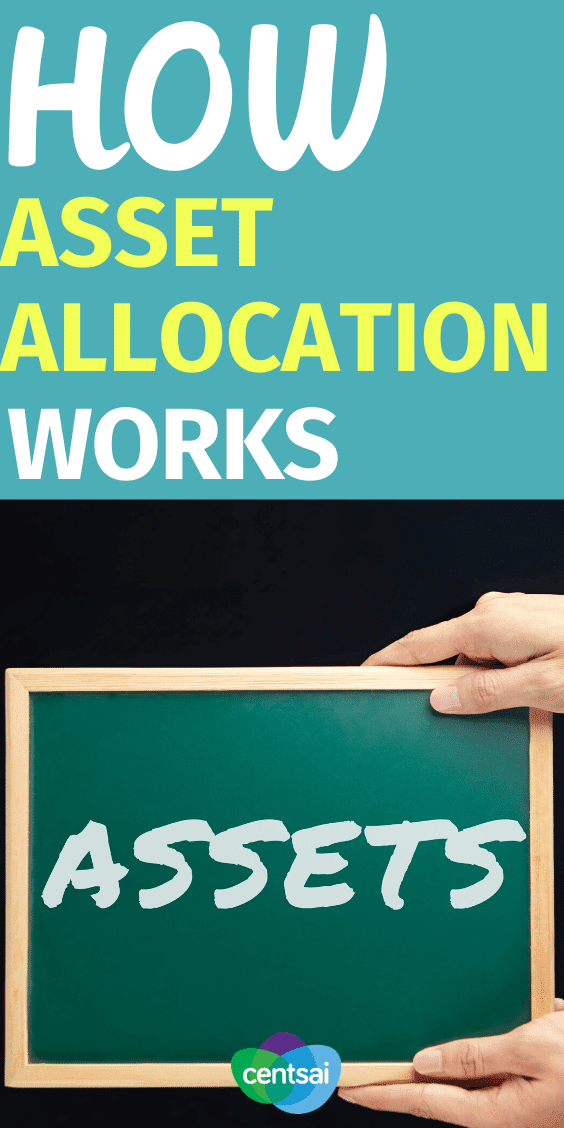
Asset allocation is misunderstood. It’s more than just not having all of your eggs in one basket. It’s a complex tool, but using asset allocation can be simple.
The disservice many do in explaining asset allocation is to oversimplify. It certainly can be simplified and made understandable. But making it appear far simpler than it is glosses over its power.
What Is Asset Allocation
Asset allocation is an investment risk-management tool. It helps you reduce your risk at the level of your portfolio. Individual investment risk doesn’t change; each investment you hold retains its unique risk characteristics. The genius behind asset allocation is that it is portfolio-level risk that matters and that you can control portfolio level risk by controlling your allocation between investment classes.
Start With a Free Consultation
This is where traditional overviews break down. The generally cited example is “stocks, bonds, cash, etc.” These categories are far too broad. For asset allocation to be effective, we need to drill down a lot further. There are a number of asset classes within the category of stocks, and these asset classes behave differently across time. Not all stock investments are the same. Neither are all bond investments. Those are extremely broad classifications.
How Asset Allocation Works: Part 1
For any asset class, there’s a wealth of historical information on how that specific asset class has performed over time. We can see its average annual return and the range of annual returns. These returns form a distribution, showing the likelihood of the returns for this asset class falling within a given range any year.
If an asset class is volatile, the range of returns we could expect within a given year will be large.
We could expect strongly negative or strongly positive returns in any one year.
Looking longer-term, this range narrows. An investment with a wide range of returns will have a narrower expected range of returns over a slightly longer period and a still narrower range of expected returns over a longer period. All of this is based on historical data.
Assets that are not volatile have a much narrower expected range of returns. Cash, for example, isn’t volatile. The returns we can expect from cash are predictable within a far narrower range than a more volatile investment, such as the stocks of small companies.
We can model different mixes of assets with different expected annual returns and different volatilities, which we are looking at a range of returns. We can predict the expected annual returns of our modeled portfolios and the expected range of volatility of each of those portfolios.
If we find for each possible expected annual return a portfolio that has the least volatility for that expected annual return, we will have a set of portfolios that have the least risk (measured as volatility) for any level of return. We can graph this, a line that shows for any level of return you might desire the portfolio that historically would produce that return with the least volatility. This line is called the efficient frontier; you can’t get a higher expected return without increasing risk — it’s the most efficient portfolio to produce the expected return.

Note that your return increases significantly for increases in risk early on, starting from the left side of the graph. As your risks and returns increase, you reach a point where further increases in risk produce little or no increase in return.
You reach a point of diminishing returns.
A typical asset allocation model will use over 20 asset classes. Ideally, your asset allocation should be tailored to your specific situation, using your existing assets and expected contributions, timeframes, and goals to design a portfolio structure specific to your needs. Your specific asset allocation may use all of the modeled asset classes or only a portion of them.
How Asset Allocation Works: Part 2
The synergy in asset allocation is that the volatility at the portfolio level — your overall volatility — is less than the volatility of your most volatile investments. Your overall risk is lower than the risk of your riskiest investments. A lot lower.
There are relationships between how investments perform during specific market conditions. Some investments move in the same direction at the same time; they are positively correlated with one another. Other investments move in opposite directions at any given time; they are negatively correlated.
The correlations between asset classes are the key to asset allocation.
Taken together, the path of the portfolio is more predictable than the path of any of the individual assets.
Some of this makes sense intuitively. For example, if you take an investment in a volatile asset class, like large company international stocks, and replace a small portion of that investment with a somewhat less volatile asset class, such as large company domestic stocks, the combined investment is less volatile. The return of the combined portfolio is also slightly lower. However, it gets more interesting.
If we start with an investment in large company domestic stocks and begin replacing a small portion of this investment with more volatile large company international stocks, the volatility of the combined portfolio also goes down. At the same time, the return of this less volatile combined portfolio is higher.
Choose Your Own Investments With Automated Portfolio Management
By adding a more volatile investment, in this example, the volatility decreases because these investments don’t work in the same direction at the same time. They are not highly positively correlated.
Note: If you continue to increase the percentage of the more volatile large company international portion, the risk continues to decrease, then switches course and begins increasing again. But there is a range in which the volatility of the combined portfolio is lower than the volatility of either investment alone.
Using Asset Allocation
Many asset allocation advocates point to asset allocation’s strength in that adhering to the portfolio mix has a greater impact on returns than the specific selection of investments within each asset class has. It’s more important to use the model fully than to worry about whether one specific small-cap fund is better than another.
Investment selection matters, but the majority of a portfolio’s return (over 90 percent) is attributable to the underlying asset classes you’re invested in. Makes sense, considering that if you’re all in cash you could expect one thing and all in large-company stocks quite something else.
The caveat is to make sure your investments are true to their intent. Your small-cap stock fund needs to be in small-cap stocks — style purity is important.
Across time, your actual portfolio will drift off of your targets due to some asset classes outperforming and others underperforming.
Portfolio Rebalancing
Portfolio rebalancing is where the magic happens. When an asset class has grown larger than its suggested allocation is when you need to sell. It is also when you are least likely to want to sell. When an asset class has shrunk below its suggested allocation is when you need to buy. It is also when you are least likely to want to buy. We know we are supposed to sell high and buy low but we find it difficult to do.
We find it difficult to sell out of an asset that’s going up; we find it hard to buy into one that’s going down. We may understand it intellectually, but it pulls at our heartstrings; we don’t want to exchange the good for the bad.
The magic is that we now have a guide and we can use decisions that we have made in advance. We don’t have to decide to sell and buy; we made that decision when we committed to using asset allocation. We’re actually taking an asset that has gone up and has decreased potential to go up more and exchanging it for an asset that is relatively down and has increased upside potential.
We’re doing the right thing. We know it, but that doesn’t make it easy.
Removing the point-of-decision by using a pre-made decision makes it far easier. When you follow your asset allocation, you are far more likely to actually sell high and buy low like you are supposed to.
When and How to Rebalance
There are two methods for determining when to rebalance. One is to do so at set time intervals. You might rebalance semi-annually or annually. The other is to set targets, where you rebalance when any asset class is out of balance by a set percentage.
Rebalancing is both art and science. You should rebalance frequently enough to not miss out on increasing markets but not so frequently as to be altering your portfolio for short-term market reactions. This is why you want to have a mechanism to follow. Both methods work well, many people find the time-based method to be easier to follow.
You can accomplish rebalancing in several ways. You can transfer between accounts, liquidating positions that are over their target and purchasing into positions where you are below target. You can also rebalance by adding funds, should you be in a position to do so.
You may choose to accomplish the bulk of your rebalancing by adding to those underrepresented investments. You can also rebalance by steering contributions to underrepresented classes if you are making ongoing contributions to the portfolio. Or you may do some combination of the three.
If your asset allocation is a nonqualified portfolio, you will want to consider tax consequences. And you will always want to consider transaction costs.
Start With 5% Fixed-Interest and No Fees
Model Portfolios
It’s common for investment organizations to offer standardized “asset allocations” for investors to follow. These are often fixed portfolios of five or six asset classes. They are asset allocation-based, but not actually an asset allocation model. Investment classes such as “stocks” are far too broad to properly implement. You would need an investment that mimics the set of all different types of stocks and their geographical markets.
These portfolios are great starting points. People starting out who still have a modest portfolio will be better served using one of these models than they will be winging it.
Once your portfolio is over $50,000, you should be thinking about using formal asset allocation — if you want to improve the predictability of your returns while minimizing your relative risk. That’s what asset allocation is all about, a way to improve the predictability of your performance while minimizing risk. And that, taken together, improves the likelihood of you achieving the financial goal toward which you are investing.












